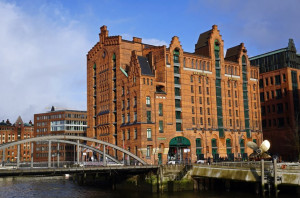Today eel is often included to meet the expectations of unsuspecting diners.
There is Bratkartoffeln, Finkenwerder Scholle, Pannfisch, Rote Grütze and Labskaus.
Alsterwasser is the local name for a type of shandy, a concoction of equal parts of beer and carbonated lemonade, the lemonade being added to the beer.
There is the curious regional dessert pastry called Franzbrötchen. Looking rather like a flattened croissant, it is similar in preparation but includes a cinnamon and sugar filling, often with raisins or brown sugar streusel.
The name may also reflect to the roll’s croissant-like appearance – franz appears to be a shortening of französisch, meaning “French”, which would make a Franzbrötchen a “French roll”. Ordinary bread rolls tend to be oval-shaped and of the French bread variety.
The local name is Schrippe for the oval kind and, for the round kind, Rundstück, a relative of Denmark’s rundstykke. In fact, while by no means identical, the cuisines of Hamburg and Denmark, especially of Copenhagen, have a lot in common. This also includes a predilection for open-faced sandwiches of all sorts, especially topped with cold-smoked or pickled fish.
The American hamburger may have developed from Hamburg’s Frikadeller: a pan-fried patty made from a mixture of ground beef, soaked stale bread, egg, chopped onion, salt and pepper, usually served with potatoes and vegetables like any other piece of meat, not usually on a bun. The Oxford Dictionary defined a Hamburger steak in 1802: a sometimes-smoked and -salted piece of meat, that, according to some sources, came from Hamburg to America.
The name and food, “hamburger”, has entered all English-speaking countries, and derivative words in non-English speaking countries.
There are restaurants which offer most of these dishes, especially in the HafenCity.






